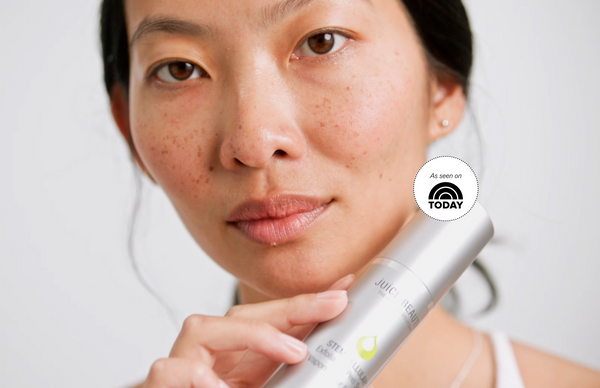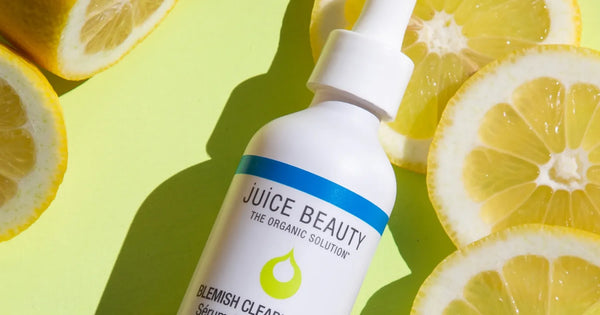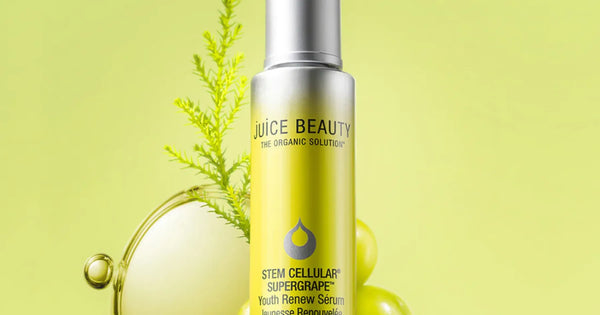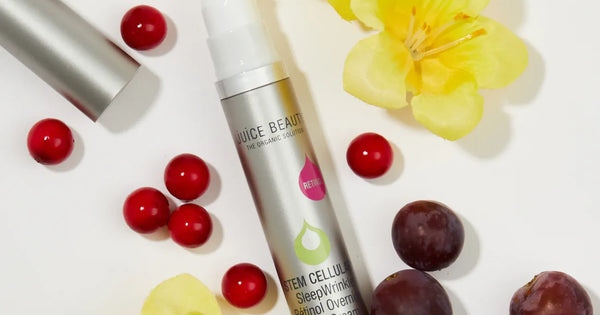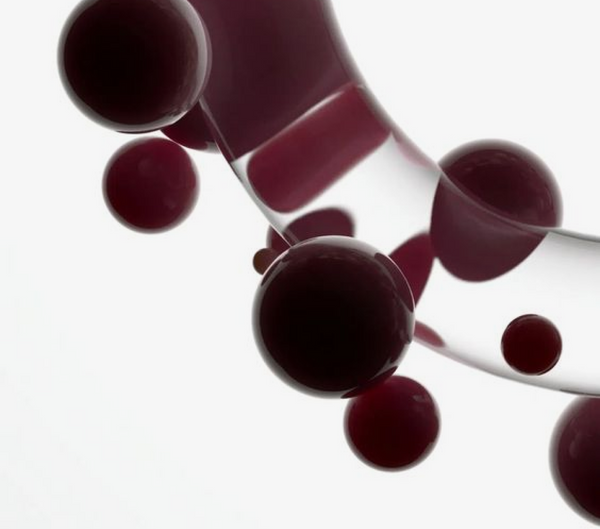Retinol has truly become a buzzword in the beauty industry, praised for its anti-aging and blemish-fighting properties.
Wondering how you can make this ingredient work for your skin concerns? This article will get into the science behind retinol, its many benefits, and how to incorporate it into your regular skincare routine.
What Is Retinol?
Retinol is a type of retinoid and a form of vitamin A. It’s a powerful skincare ingredient known for supporting cell turnover and collagen production.
In short, retinol helps exfoliate skin and encourages it to make collagen, allowing it to look luminous, plump, and youthful.
Unlike prescription retinoids, retinol is available over the counter, accessible to anyone. In most cases, it is also fairly cost-effective, making it more attainable for everyday life.
What Is the Science Behind Retinol?
Retinol’s effectiveness lies in its ability to penetrate deep into the skin, where it can really make an impact. Its small molecular structure allows it to reach the dermis, where it can work its magic on a cellular level.
When retinol is applied to your skin, it goes through a transformation inside your skin cells.
Here’s how it works:
- Absorption: First, the retinol penetrates the outer layer of your skin, the epidermis.
- Conversion: Once inside, special proteins in your skin cells — called enzymes — change the retinol into retinoic acid. This is the “active” form that your skin can use to its benefit.
- Cell Turnover: Retinol helps tell your skin it’s time to start churning out new skin cells.
- Collagen and Elastin Support: Retinoic acid also signals your skin to continue producing collagen and elastin. These proteins keep your skin plump, firm, and elastic.
Essentially, retinol helps tell your skin cells to work effectively and produces materials that keep your skin looking young.
What Are Some Key Benefits of Retinol for Skin?
Now that we’ve covered the basics, let’s explore some of retinol's most talked-about benefits for your complexion.
Supports a Youthful-Looking Complexion
Retinol is well-loved for its visible anti-aging benefits on the skin's surface. It can help reduce the appearance of fine lines and wrinkles, improve skin texture, and promote a more even-looking skin tone.
Want your skin to look like it did when you were a teenager? Retinol is your first line of defense.
If crow’s feet and fine lines around your eyes are starting to creep up on you, go for the Stem Cellular SleepWrinkle Retinol Overnight Eye Cream. With its proprietary blend of retinol, Bio-Retinol, peptides, hyaluronic acid, and C0Q10, 97% of study participants showed improvement in fine lines and wrinkles.
Eases Breakouts
For those struggling with acne, retinol can be an absolute game changer. It helps unclog pores and regulates sebum production, to help keep oily skin at bay, and manage existing breakouts.
Skin Texture
Regular use of retinol can lead to smoother, more refined skin texture and tone. It helps exfoliate dead skin cells and supports the proper growth of new, healthy cells.
If you feel your skin needs a little extra help with exfoliation, you can also add our Green Apple Peel Exfoliating Mask to your routine once or twice a week.
How Does Retinol Combat the Signs of Aging?
Visible signs of aging are one of the most common skin concerns. If you’re dealing with age spots, fine lines, and sagging skin, retinol could be a great way to help your skin look more youthful.
Supporting Collagen Production
One way that retinol fights against signs of aging is through its collagen-supporting properties. Collagen is essential for maintaining the skin’s firmness and elasticity, and it can also help reduce the appearance of dark spots.
Reducing the Look of Fine Lines and Wrinkles
By supporting cell turnover and collagen production, retinol helps diminish the appearance of fine lines and wrinkles — the most obvious signs of aging in the skin.
Supporting Skin Elasticity
It’s a fact of life — as we age, our skin loses elasticity. However, just because we know it will happen doesn’t mean we have to live with it. Retinol supports the proper production of elastin, which helps skin maintain its shape and bounce back.
What Is Retinol’s Role in Managing Breakouts?
If breakouts are a main concern for you, there’s good news here, too — retinol could help ease your discomfort.
Unclogging Pores
Retinol helps prevent the buildup of dead skin cells that can clog pores and lead to acne. Because it promotes faster cell turnover, it also helps to keep skin and pores clean.
Supporting Balanced Sebum Production
Excess sebum can contribute to acne. Because retinol helps regulator oil production, it can reduce the likelihood of breakouts.
Fading the Look of Pigmentation Issues
Retinol can help to fade dark spots and pigmentation caused by breakouts, sun damage, or aging, leading to a more even skin tone. Who doesn’t love even, luminous, dewy skin?
How To Choose the Right Retinol Product
Retinol products come in various concentrations, typically ranging from .01% to 1%. That might not seem like a lot, but keep in mind that retinol packs a punch. It’s best to start with a lower concentration and work your way up as your skin becomes accustomed to a new product.
Over-the-Counter vs. Prescription Retinoids
You may have heard the terms “retinol” and “retinoid,” and wondered about the difference between the two. Retinol is typically available over the counter, and is available in various concentrations and types of products.
Retinoids, on the other hand, are more concentrated and intense for those with severe skincare needs. We generally recommend trying a retinol product before resorting to retinoids, which can be pricier and require an appointment with a dermatologist.
Formulations for Different Skin Types
When choosing a retinol product, consider your skin type. Don’t choose a product simply because it has retinol in it. Rather, select a product that works with your skin, and has the nourishing ingredients you trust.
Our Stem Cellular Anti-Wrinkle Retinol Overnight Serum is one of our bestsellers and was voted best in class by the Chicago Tribune. 67% of users noticed a reduction in dark spots in less than two months, which is truly remarkable.
How To Incorporate Retinol Into Your Skincare Routine
When you’re adding retinol to your lineup for the first time, there are a few things to keep in mind to make sure you have a good experience.
Starting Slow
There’s no need to be nervous when it comes to retinol. This super-strong skincare ingredient has gotten a bad rap for being, at times, a little too strong. This can be remedied by simply taking it slow when starting off with a new retinol routine.
Many people just start out too quickly and with too strong a concentration. The best practice for retinol beginners is to start slowly: use it once or twice a week initially.
Ideal Time and Frequency of Application
Once your skin has become accustomed to retinol you can start increasing the frequency with which you apply it. Most people find that they can safely and comfortably use retinol everyday.
Retinol is best applied at night since it can increase your skin’s sensitivity to sunlight. If, for whatever reason, you want to apply retinol in the morning, be extra careful about applying your sunscreen.
Complementary Ingredients
Pair retinol with hydrating, nourishing ingredients like hyaluronic acid and seed oils to combat potential dryness. Niacinamide is another great partner for retinol, as it can reduce potential irritation that can occur, and can enhance its anti-aging and anti-acne effects.
If you’re looking for a serum to use during the day to complement your nightly retinol regimen, try a vitamin C serum.
Our Antioxidant Serum is a great choice for all skin types. Vitamin C is a potent antioxidant that protects against UV damage and environmental stressors, so it’s the perfect pairing for retinol, which repairs existing damage.
What Are the Potential Side Effects of Retinol?
As we mentioned earlier, some people do experience a little irritation when first starting out with retinol: redness, drying, or peeling can occur in some people, especially those with sensitive skin.
These effects typically subside as skin adjusts. To minimize irritation, start with a low concentration, use 102 times a week to start, and make sure to use a moisturizer.
How To Maximize Retinol’s Effectiveness
For best results, be consistent with your retinol use. Results often don’t become visible until at least 6-8 weeks, with the full results taking even longer — up to six months.
Retinol is just part of a balanced skincare routine, so make sure you are also cleansing with a gentle cleanser, moisturizing, and wearing your SPF! For a great daytime moisturizer that does double duty, try out Prebiotix SPF 45 Glow, Daily Multi-Tasking Moisturizer.
Wrapping Up
Retinol is a powerful skincare ingredient with numerous benefits for aging and acne-prone skin. By understanding how it works and how to use it effectively, you can harness its potential to achieve healthy, youthful-looking skin.
Just like any skincare product, consistency is key, and you should always consult a dermatologist before making drastic changes to your routine, especially if you have complex skin issues.
When you can, choose clean, natural skincare products — like those from Juice Beauty.
Sources:
Retinoids in the Treatment of Skin Aging: An Overview of Clinical Efficacy and Safety | Dove Press
Retinol: The Ideal Retinoid for Cosmetic Solutions | JDDonline
Does Retinol Deserve the Hype? A Stanford Dermatologist Weighs In | Stanford Medicine

